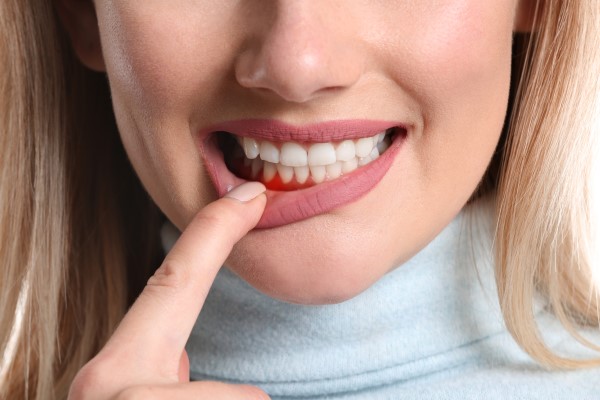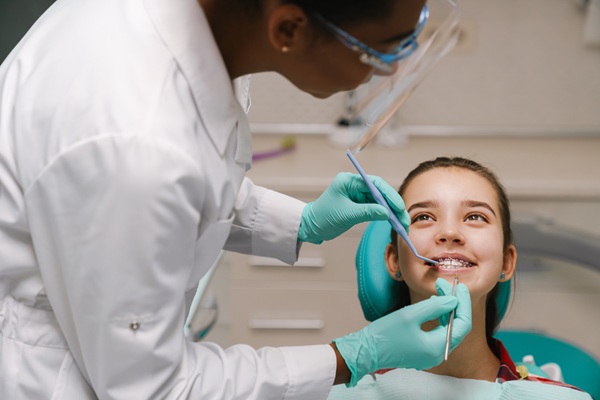How is Laser Dentistry Used to Treat Gum Disease?

Laser dentistry is an innovative way of handling dental treatments. A laser device emits a narrow and intense beam of light that dentists use to target hard or soft tissues at close range. The beam can shape and reshape the hard and soft tissue. While this may seem strange or painful, laser dentistry has its benefits over more conventional techniques used for dental treatment. Continue reading to learn how lasers are used for treating gum disease.
Overview of gum disease
Gingivitis occurs when there is gum inflammation, resulting from the accumulation of plaque and bacteria. Usually, when the gums become inflamed, patients may notice redness or bleeding when brushing. When gingivitis is left untreated, it worsens into periodontitis, which is a much-complicated condition.
Periodontitis is indicated by the recession of gums from the teeth, creating pockets that trap debris and bacteria. Plaque continues to build up along the gum line, and with further infection of the periodontal pockets, bacteria start to damage the connective tissues holding the teeth in position. The teeth loosen and potentially fall out. Periodontitis is the leading cause of tooth loss in adults.
Gum disease is mostly a result of poor oral hygiene that causes the accumulation of plaque. However, certain factors such as hormonal changes that accompany puberty and pregnancy, a family history of gum disease, certain medications and illnesses that compromise the immune system can also contribute to gum disease.
Using laser dentistry for gum disease treatment
Before laser dentistry, treating gum disease entailed performing a deep cleaning to remove pockets of tartar and plaque harboring the bacteria and a prescription of powerful antibiotics. The process is often described as scaling and root planing and involves cleaning the teeth surfaces and the roots, which may have been exposed due to gum recession. In many cases, periodontal disease may reoccur, despite proper treatment.
Regarding the treatment of gum or periodontal disease with laser dentistry, multiple processes are involved. First, the dentist will perform an evaluation to determine the progress of the disease. The dentist will then use a dental laser to check and remove infected or inflamed gum tissues surrounding the teeth. The process is performed with a microscope and helps to decontaminate or sterilize deep gum pockets.
After removing the infected tissue and exposing the roots, the dentist will use an ultrasonic root cleaner to remove tartar instead of handheld devices. Finally, a laser beam is used to heat the stem cells containing blood in the gum pockets to allow the tissues to reattach to the tooth root. Laser treatment ensures that there is no wrong or unnecessary removal of the gum and other tissues. The sterilization process helps the body create new connective tissues, collagen and bone. In the end, the dentist will test the gums to ensure there is no lingering infection.
In conclusion
Laser dentistry has significantly simplified and enhanced the process of treating gum disease. Since no bacteria strains can withstand the laser, you can expect to notice signs of healing in no time and get your smile back. To learn more about how lasers are used for treatment, book an appointment today.
Request an appointment here: https://www.bryancousindmd.com or call Cosmetic & Family Dentistry of the North Shore at (781) 443-8268 for an appointment in our Swampscott office.
Check out what others are saying about our dental services on Yelp: Laser Dentistry in Swampscott, MA.
Recent Posts
We can treat patients who have sensitive teeth with laser dentistry to minimize the possibility of pain.Instead of having to use traditional metal tools to clean your teeth, we can use laser dentistry. Along with enhancing the overall cleaning process, laser dentistry can also help with various procedures in the dental office. With laser dentistry,…
Taking children to a kid friendly dentist is a great idea, especially if there is a noticeable dental issue, such as white spots. White spots should never be ignored, regardless of the patient's age. However, children need to visit a kid friendly dentist because their teeth are still developing. Learn more about taking a child…
There is no doubt that clear aligners are a great way to straighten teeth and improve the appearance of your smile, but it is important to ensure they remain straight after treatment is over. Whether braces or clear aligners are used, teeth have a tendency to try and shift back to their original position, and…
Understanding the key differences between a dentist and an orthodontist can help patients determine which specialist they need for their oral health care. While both professionals focus on maintaining and improving oral health, their roles, training, and areas of expertise differ significantly. A dentist typically handles general dental care, while an orthodontist specializes in diagnosing…


